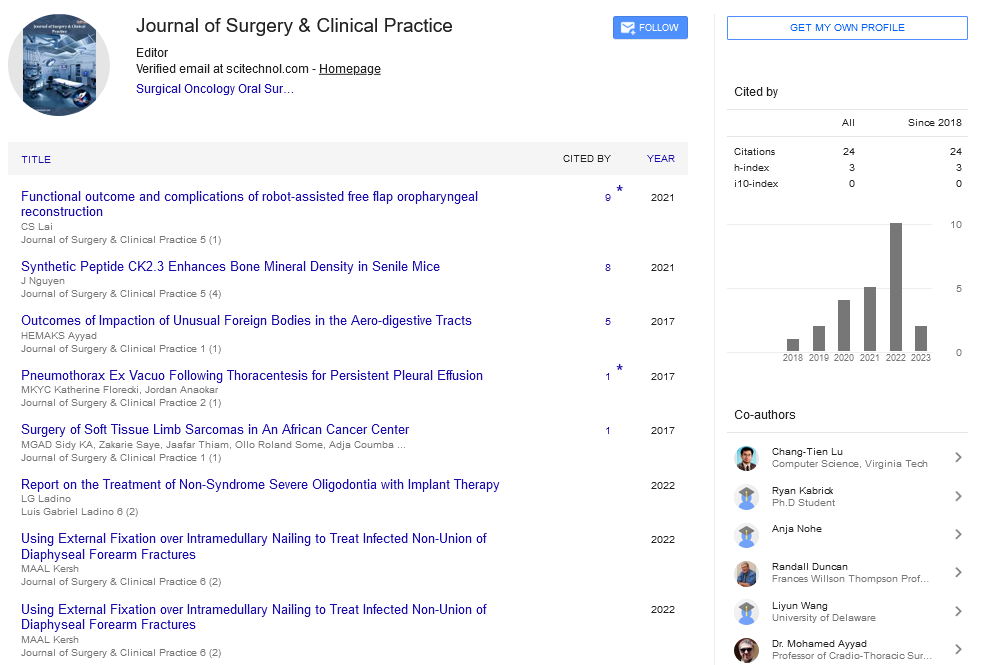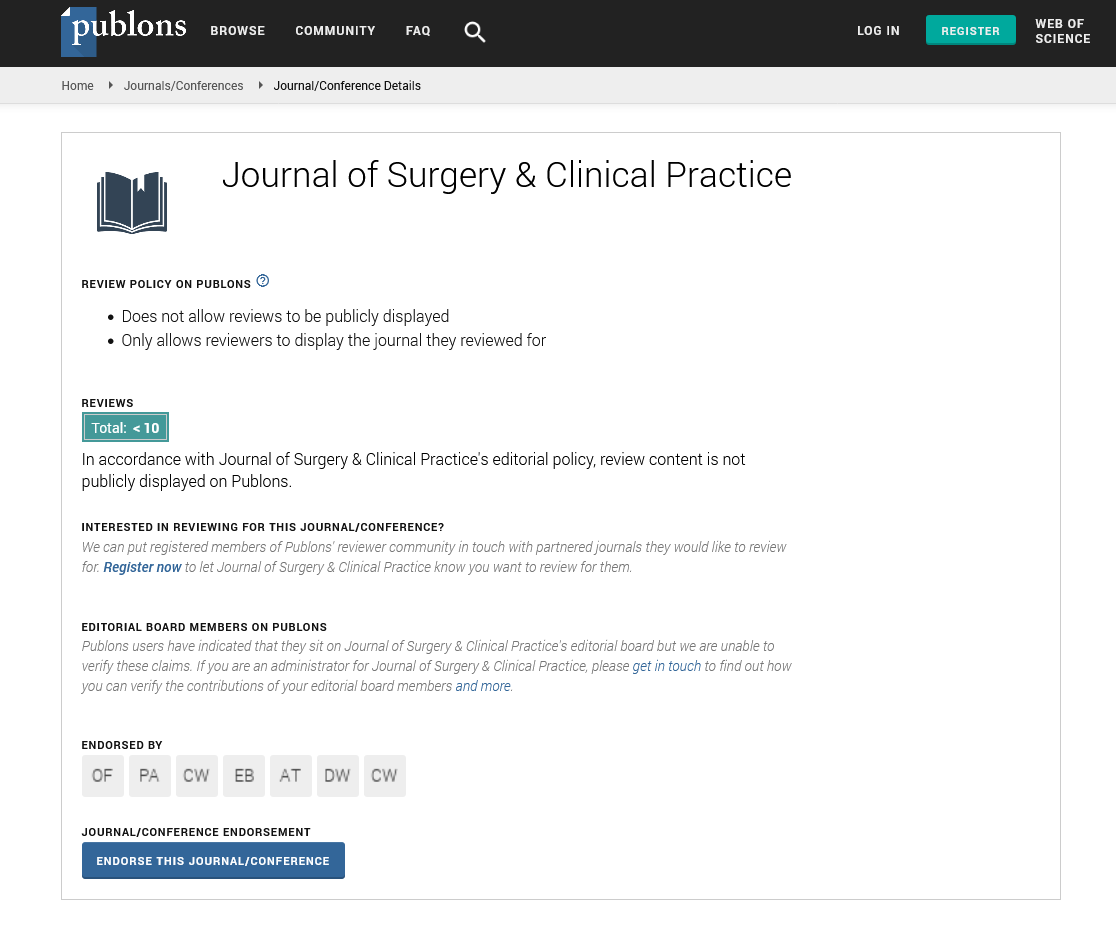Perspective, J Surg Clin Prac Vol: 7 Issue: 3
Approaches and Challenges in Patients with Myasthenia Gravis undergoing Thoracic Surgery Treatment
Cheryl Crisafi*
1Department of Thoracic Surgery, University of Texas, Texas, USA
*Corresponding Author: Cheryl Crisafi,
Department of Thoracic Surgery,
University of Texas, Texas, USA
E-mail: chery@hotmail.com
Received date: 23 August, 2023, Manuscript No. JSCP-23-117730;
Editor assigned date: 28 August, 2023, PreQC No. JSCP-23-117730 (PQ);
Reviewed date: 11 September, 2023, QC No. JSCP-23-117730;
Revised date: 18 September, 2023, Manuscript No. JSCP-23-117730 (R);
Published date: 25 September, 2023 DOI: 10.35248/JSCP.23.7.1000391
Citation: Crisafi C (2023) Approaches and Challenges in Patients with Myasthenia Gravis undergoing Thoracic Surgery Treatment. J Surg Clin Prac 7:3.
Description
Myasthenia Gravis (MG) is a chronic autoimmune neuromuscular disorder characterized by muscle weakness and fatigue, often worsened by repetitive movements. While medical management is the first line of treatment, certain cases of MG, especially those involving thymoma or thymic hyperplasia, require thoracic surgery. The specific approaches and challenges faced in thoracic surgery for patients with Myasthenia Gravis, shedding light on the complexities of managing this condition.
Thymectomy is the surgical removal of the thymus gland, is a common approach in MG patients, especially those with thymoma or thymic hyperplasia. Early thymectomy, preferably in young, nonthymomatous MG patients, has been shown to improve long-term outcomes and reduce the need for immunosuppressive medications. Minimally invasive techniques, such as Video-Assisted Thoracoscopic Surgery (VATS), have revolutionized thymectomy, leading to smaller incisions, reduced pain, and faster recovery. In cases where MG is associated with thymoma, extended thymectomy involves the removal of surrounding fatty tissues and lymph nodes. This comprehensive approach aims to reduce the chances of disease recurrence and improve overall outcomes. However, the complexity of the surgery and potential complications necessitate a highly skilled surgical team.
MG patients are at higher risk of respiratory complications postsurgery due to muscle weakness, making ventilation management critical during the perioperative period. Careful monitoring and a multidisciplinary approach involving pulmonologists and anesthetists are necessary to mitigate these risks. Thymoma-associated MG patients face the challenge of disease recurrence. Close post-surgical monitoring is essential to detect any signs of recurrence early. Adjuvant therapies, such as radiation or chemotherapy, are often considered to prevent relapse. Balancing immunosuppression is a delicate challenge. Surgical intervention might influence the patient's need for immunosuppressive medications. Careful titration is necessary to avoid myasthenic crises while preventing overimmunosuppression, which can lead to infections and other complications. MG is a highly variable disease, and each patient may respond differently to surgical interventions. Factors such as age, overall health, comorbidities, and the severity of MG symptoms need to be carefully evaluated to tailor the surgical approach to individual patient needs.
Collaborative efforts between neurologists, thoracic surgeons, anesthetists, and pulmonologists are crucial. A unified approach ensures comprehensive pre-operative assessment, intraoperative care, and post-operative management, addressing the diverse challenges posed by MG. Ongoing advancements in surgical techniques, including robotic-assisted thymectomy, offer promising avenues. Robotic surgery provides enhanced precision and dexterity, allowing surgeons to navigate intricate anatomical structures with greater accuracy, potentially reducing surgical risks and improving patient outcomes. Implementing treatment plans based on individual patient profiles, including genetic factors and specific MG antibody types, holds the key to optimizing surgical outcomes. Personalized medicine approaches may enable the identification of patients who would benefit most from surgery, enhancing the overall efficacy of thymectomy.
Thoracic surgery for Myasthenia Gravis presents a unique set of challenges, understanding of both the disease and the patient's overall health. Through a multidisciplinary approach, meticulous surgical techniques, and personalized treatment plans, the complexities of MGrelated thoracic surgery can be reduced effectively. As research continues to unravel the intricacies of Myasthenia Gravis and surgical techniques evolve, the future holds the promise of even more refined approaches. Innovative strategies, the medical community can enhance the quality of life for MG patients, offering them renewed hope and improved outcomes for this debilitating condition.
 Spanish
Spanish  Chinese
Chinese  Russian
Russian  German
German  French
French  Japanese
Japanese  Portuguese
Portuguese  Hindi
Hindi 
